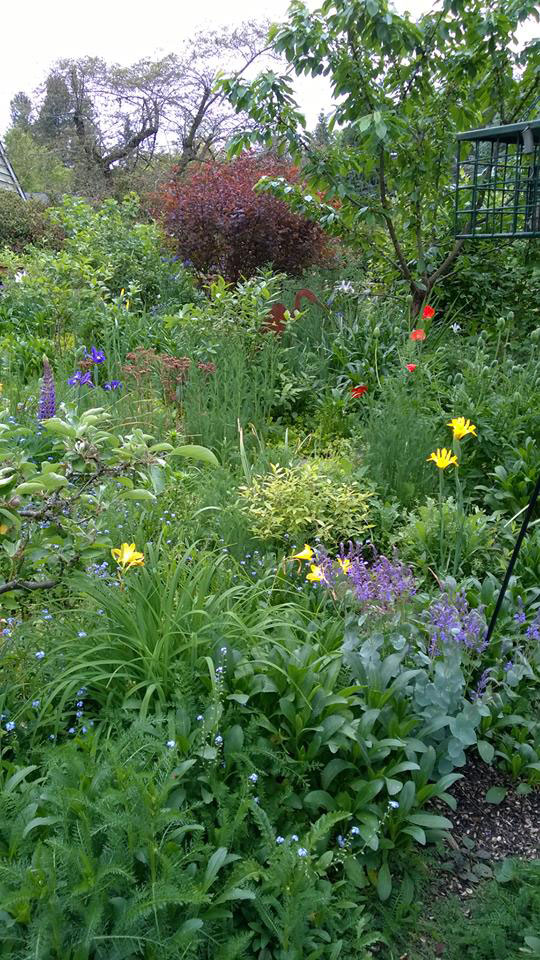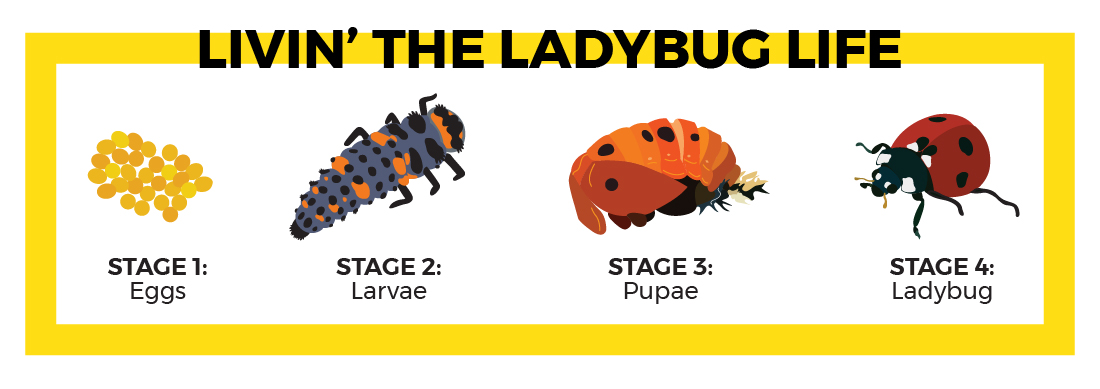Five Secrets of Ecological Pest Management

As we come into prime pest season, we’re seeing a lot of concerns about insect damage here at Sky. Whether we gardeners have leaf miners in our beet leaves, aphids on our shrubs, or tent caterpillars in our fruit trees, the fact is that pest insects like our gardens at least as much as we do. Fighting them can start to feel like an endless battle that subtracts from the joy of gardening. What’s a gardener to do?
More and more gardeners are looking for natural solutions to their pest problems. It takes some patience and work up front, but in the long run ecological pest management can be very successful. It's also a great way to make your garden more friendly to pollinators and other beneficial wildlife. Over time, you might find that letting nature take care of your pests allows you more time to relax and enjoy.
If you’re looking to “go natural," we’ve got you covered. Here are five ways to hand the pest management over to Mother Nature.
My mother taught me everything I know about ecological pest management. This is her 100% pesticide-free front yard.
1. Set your plants up for success
People often get sick when they’ve been out too long in the cold or struggled through a hectic week, and plants aren't much different. They are much more susceptible to everything from bacterial diseases to aphids when they’re stressed. Common causes of stress for Pacific Northwest garden plants include too much or too little sunlight, under or over watering, sudden temperature changes, overly acidic soil, and poor nutrition.
Basic plant care such as choosing plants suitable for your landscape, keeping your soil in good condition, feeding your plants appropriate organic fertilizers on a regular basis, and paying close attention to your watering schedule can go a surprisingly long way towards preventing pest problems before they start.
2. Encourage natural predators
One trouble with pesticides is that they aren’t very selective. What kills an earwig will likely kill a ladybug, and what kills a cabbage looper will likely kill a swallowtail. Pesticides (yes, even many organic ones) therefore harm not only pests, but also beneficial insects such as pollinators, along with predatory insects that would normally eat the pests.
This can lead to what some refer to as “the pesticide treadmill.” Gardeners can become dependent on ever-increasing amounts of pesticides because they have accidentally removed natural pest controls from their gardens.
Reducing or eliminating the use of pesticides will certainly help your predators, but there is no reason to stop there. Like all animals, predators need plenty of food, water, and shelter for themselves and their babies. Consider incorporating shallow water sources such as bird baths and diverse shrubs and perennials that can provide year-round shelter into your landscape.
For some gardeners, embracing all of the diverse predators that come to their gardens may require a bit of adjustment. Animals that love to eat garden pests include charismatic favorites like ladybugs, dragonflies, and songbirds. They also include creatures some find harder to love such as wasps, bats, and spiders. If you choose to set yellow jacket traps or remove inconvenient spider webs, keep in mind that you’ve likely increased your population of plant-eating pests. For more in-depth information about predatory insects, check out this great resource from WSU.
Inoculating your garden with predatory insects can be a great way to kick-start an ecological pest management program. We sell ladybugs (to eat your aphids) and predatory nematodes (to go after your soil-dwelling pests) here at Sky.

3. Mix it up
There’s nothing pests love more than a large, unbroken patch of their favorite food. Most pest insects don’t like to travel far between food sources. By practicing crop rotation and planting diverse perennials together, you make life harder for pests while making it easier for predators to catch them.
Consider integrating aromatic herbs with your other perennials and planting rows of flowers between your vegetables. When it comes to vegetable gardens, rotate each planting area between root crops, leafy greens, and fruiting summer veggies. If space allows, leave vegetable patches fallow (planted with cover crops or grasses) once every few years to break up the pest cycle and rejuvenate the soil. Basically, the more diversity – both within each planting area and over time – the better.
 4. Know your enemies
4. Know your enemies
Knowledge is power! By understanding the life cycles and habits of your biggest problem pests, you can prevent infestations before they start. For example, did you know that aphids reproduce without needing to mate once they get established? That means that aphid problems can get out of hand quickly, but it also means that you can prevent entire infestations by keeping guard for the first few aphids of the season and squishing them on sight.
Many pest cycles start with eggs laid near host plants in the early spring, so you can short-circuit these problems entirely by keeping your beds covered (with floating row cover, or sometimes just with a thick mulch layer), until crop plants are well established.
Understanding the natural life cycles of your pests will help you accurately assess any pest problems so that you don’t waste your efforts or money. The more you know about your pests, the more precisely you can target your pest-control efforts. Here at Sky, we can help you identify pests and recommend holistic management strategies
5. Don’t sweat the small stuff
No matter what pest management methods you choose, the reality is that you’ll never completely eradicate your unwanted guests. A nibbled leaf, or even a small aphid explosion, is no reason to give up on your ecological pest management goals.
Remember that your friendly predators need something to eat! If you were to completely run out of pests, your ladybugs, wasps, and dragonflies would abandon your garden in search of a more consistent food supply.
The message here is that it’s okay to relax. Do your best to monitor for pests so that you can prevent major invasions, and address large infestations if they come up, but don’t worry if you see signs of a few pest insects here and there. It’s all part of the process.
